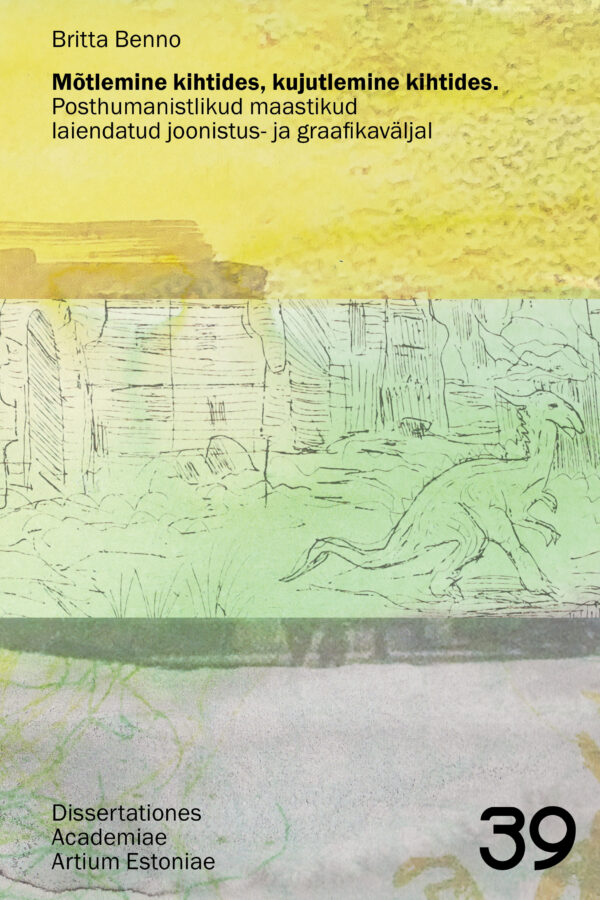
Britta Benno’s artistic research based doctoral thesis “Mõtlemine kihtides, kujutlemine kihtides. Posthumanistlikud maastikud laiendatud joonistus- ja graafikaväljal” (“Thinking in Layers, Worlding in Layers: Posthuman Landscapes in Expanded Field of Printmaking and Drawing”) aims primarily to search for new art forms, but also to develop the fields of drawing and graphics in the form of expanding vocabulary, opening working methods, and making sense of various activities.
As a working method, graphics lives on today in various forms and concepts, either nostalgically or instead as a posthumanist protest. However, Benno believes that the development of printing technology is needed not only in technical terms, but its broader and more meaningful interpretation – one could even say that it reveals tacit knowledge. In Benno’s opinion, this kind of openness is conceptually very characteristic of drawing. Under the expanded drawing field, she can place all her creations, because everything starts with a simple drawing and continues depending on substantive and formal decisions in subsequent layers of materials and art media. The openness, permeability and permissiveness of drawing has been an essential part of all her creative research, on top of which the following layers of media, thoughts and materials have grown: animation, installation, etc.
The thesis is based on the discussions that accompanied the creation of the concepts and artworks of the author’s three peer-reviewed exhibitions – “Dystopiline Tallinn” (Kunstihoone Galerii, 2019), “Ruinenlust on Lasnamäe” (Hobusepea gallery, 2020) and “Becoming land” (Tartu Kunstimaja, 2022), exemplifying her approach to layered thinking and imagining and extended media in various variations. The exhibitions can be understood as three different cases or journeys, working in layers in an expanded graphic field.
Among other things, creative research allows us to conclude that the extended field of drawing and the extended field of graphics are fully alive, areas full of potential, which perfectly function as subjects of creative research, both as independent units and together with other media, crossing them hybridly. The exhibition practice proves that graphics and drawing art are able to relate to new discourses and address current issues. There are endless ways and qualities to continue to explore and analyze in these mediums.
In the wider research field, the doctoral thesis contributes to the internal observation and handling of creative processes from the artist’s position. The written part of the work is primarily intended for other artists to understand and consider their practices, including as part of the learning and teaching process.
Supervisor: Dr. Elnara Taidre
External reviewers: Dr. Elo-Hanna Seljamaa (University of Tartu), Prof. Linda Kaljundi (Estonian Academy of Arts)
Opponent: Dr. Elo-Hanna Seljamaa (University of Tartu)
Language editor: Maret Nukke
Series design: Indrek Sirkel
Layout: Pärtel Eelmere
Dissertationes Academiae Artium Estoniae 39
225 pages, in Estonian
Estonian Academy of Arts, 2023
ISBN 978-9916-619-95-7 (print)
ISBN 978-9916-619-96-4 (pdf)
ISSN 1736-2261
